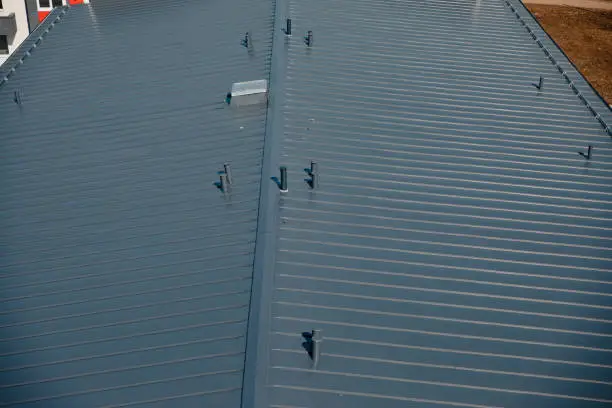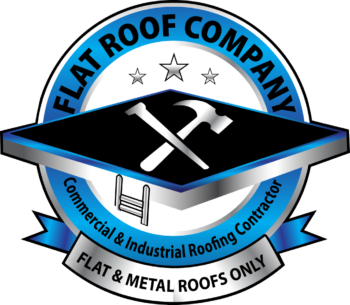Choosing the right roofing material is one of the most important decisions a homeowner can make. It affects not only the appearance of your home but also its energy efficiency, maintenance costs, and long-term durability. Among the many options available, metal roofing has gained significant attention in recent years for its superior performance and lasting value.
As homeowners continue to prioritize energy savings, sustainability, and storm protection, metal roofs have become a go-to choice for both residential and commercial properties. But are they really worth the investment? This guide breaks down the real, long-term benefits of metal roofing—covering cost-effectiveness, performance, lifespan, and maintenance—so you can make an informed decision backed by facts, not marketing hype.
Why Metal Roofing Is Becoming the New Standard
Metal roofs were once associated primarily with barns or industrial buildings, but that perception has changed dramatically. Today, homeowners in Newark, DE are increasingly turning to Flat Roof Company for modern metal roof installation options that combine style with performance. These roofing systems come in a variety of designs, colors, and finishes that mimic shingles, tiles, or even slate—making them suitable for almost any home or commercial property design.
According to data from the Metal Roofing Alliance (MRA), metal roofing’s market share in the U.S. has doubled over the past decade. Homeowners are shifting away from traditional asphalt shingles due to higher durability, lower lifetime costs, and superior resistance to weather damage.
In fact, recent studies show that homes with metal roofs can see a 60% reduction in annual maintenance costs compared to asphalt shingle roofs. Additionally, the average metal roof lifespan ranges from 40 to 70 years, far exceeding the 15–20 years of typical asphalt systems.

1. Exceptional Durability and Weather Resistance
Metal roofs are designed to withstand extreme weather conditions—including high winds, hail, heavy rain, and even wildfire exposure. A properly installed metal roof can resist wind speeds up to 140 mph, comparable to Category 4 hurricane levels.
Unlike asphalt shingles that crack and warp under UV exposure, metal panels reflect solar radiation, reducing heat absorption and degradation. They’re also non-combustible, giving them a Class A fire rating, which is the highest rating possible.
For regions that experience heavy snow or rainfall, metal roofs shed precipitation quickly, minimizing the risk of leaks or ice dam formation. This performance consistency over decades makes metal roofing services a smart long-term investment for homeowners prioritizing reliability.
2. Energy Efficiency That Reduces Utility Bills
Metal roofing is one of the most energy-efficient roofing materials available. Reflective coatings and advanced finishes help deflect solar heat rather than absorb it. According to the U.S. Department of Energy, homeowners can save up to 25% on cooling costs with energy-rated metal roofing systems.
Many modern metal roofs also feature cool-roof technology, which uses special pigments to improve heat reflectivity and lower attic temperatures. This reduces HVAC strain during summer months and enhances indoor comfort year-round.
Additionally, when paired with proper insulation, a metal roof provides excellent thermal performance in colder climates—helping retain interior warmth and reducing heating costs.
3. Longevity and Low Maintenance
One of the most significant long-term advantages of metal roofing is its lifespan. A professionally installed metal roof can last up to 70 years with minimal maintenance, compared to the 15–25 years of most asphalt roofs.
Routine maintenance involves little more than occasional inspections and debris removal. Unlike shingles that curl or break, metal roofing panels remain structurally stable for decades. They resist rot, mildew, and insect infestation, eliminating many of the maintenance concerns common to traditional materials.
Because of this, homeowners typically recoup their initial investment through lower repair costs and reduced need for roof replacement over time.
4. Eco-Friendly and Sustainable Roofing Choice
Sustainability has become a major consideration for modern homeowners. Metal roofing is one of the most environmentally responsible roofing options on the market. Most panels are made from 25%–95% recycled materials and are 100% recyclable at the end of their lifespan.
Unlike asphalt shingles, which contribute millions of tons of waste to landfills annually, metal roofs can be fully reused or repurposed. Moreover, because of their long service life, metal roofs reduce overall material consumption and waste generation over time.
For those pursuing eco-friendly home upgrades, installing a metal roof can also contribute toward LEED certification points and reduce a home’s overall carbon footprint.
5. Increased Property Value and ROI
While the upfront metal roof installation cost is typically higher than asphalt shingles, the long-term return on investment is substantial. According to Remodeling Magazine’s 2025 Cost vs. Value Report, homeowners can recoup up to 61% of their metal roof investment upon resale—significantly higher than for standard roofing materials.
Buyers are increasingly drawn to homes with low-maintenance, energy-efficient roofing systems. A metal roof signals durability and quality, allowing sellers to command a higher price and faster sales cycle.
When considering total lifecycle cost, metal roofs consistently outperform traditional systems by reducing repairs, lowering energy consumption, and extending replacement intervals.
6. Versatility and Design Appeal
Modern metal roofing services offer a wide range of styles, from sleek standing-seam panels to stone-coated or stamped designs that replicate shingles and tiles. Available in various finishes and colors, metal roofs can complement virtually any architectural aesthetic—from rustic to contemporary.
With coatings that resist fading and corrosion, homeowners can maintain curb appeal without frequent repainting or treatment. The design flexibility also allows for solar panel integration, skylights, or gutter systems—making metal roofing both functional and attractive.
7. Minimal Maintenance, Maximum Peace of Mind
Professional metal roof maintenance involves periodic inspections to ensure screws, flashing, and sealants remain secure. Because panels interlock tightly, they’re far less likely to suffer from wind uplift or leaks compared to shingles.
Homeowners who schedule annual or bi-annual maintenance through certified roofing contractors enjoy long-term protection without constant repairs. Many manufacturers even offer 40–50-year warranties, underscoring the product’s durability and reliability.
Conclusion
So, is a metal roof worth it? Absolutely. While the initial cost may be higher, the long-term financial, environmental, and structural benefits make it one of the best investments a homeowner can make. With proper installation and occasional maintenance, a metal roof offers decades of performance, energy savings, and aesthetic appeal that outlast traditional materials by far.
For homeowners seeking a roofing solution that combines durability, efficiency, and sustainability, metal roofing services deliver exceptional value—and peace of mind that lasts a lifetime.
Frequently Asked Questions
Q1. How much does a metal roof cost in 2025?
Average metal roof installation costs range from $10 to $18 per square foot, depending on material (steel, aluminum, or copper) and roof complexity. That equals roughly $20,000–$36,000 for an average 2,000 sq. ft. home.
Q2. How long does a metal roof last compared to asphalt shingles?
A metal roof can last 40–70 years, while asphalt shingles typically last 15–25 years. Proper maintenance and high-quality coatings extend longevity significantly.
Q3. Are metal roofs noisy during rain?
No. When installed with proper underlayment and attic insulation, a metal roof is no louder than asphalt shingles. Modern installation techniques have eliminated this concern.
Q4. Do metal roofs make homes hotter in summer?
Quite the opposite. Reflective coatings reduce heat absorption, and studies by the Cool Roof Rating Council (CRRC) show metal roofs can lower indoor cooling costs by up to 25%.
Q5. Can metal roofing be installed over existing shingles?
Yes—many systems allow for direct installation over existing roofing, reducing tear-off costs and waste. However, a professional inspection is essential to ensure proper structure and ventilation.
